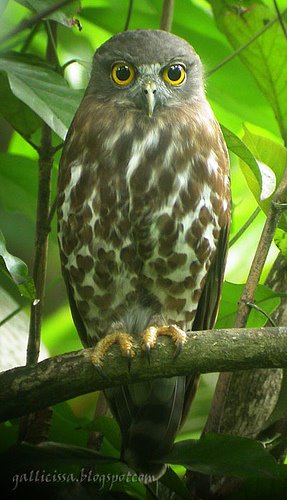
had a very good time in their 4-day natural history trip with me last month. We are talking about Dave and Rose Ripley from Wales and their girls, Celyn and Ceinwen, aged 13 and 12. Before the tour, Dave wrote to me “My wife and I enjoy birdwatching, the children not so much...”. And he added “...they would certainly enjoy elephants, snakes, lizards, insects, and birds in moderation.”
We agreed to combine the best of dry and wet lowlands by visiting the Udawalawe National Park and the Sinharaja "World Heritage" rain forest, with more emphasis on the latter.
Our dry zone leg gave plenty of the hoped for Asian Elephants. With Elephants found year-round, in their 100s at times, Udawalawe was a sure bet for seeing them. Additionally we saw Wild Boar, Wild Buffalo, Spotted Deer, Hanuman Langur, Jackal and Ruddy Mongoose. Land monitor, Flap-shelled Terrapin and Mugger Crocodile were some of the reptiles seen at the first leg.
We also saw a large dragonfly named Elephant Emperor Anax indicus, which was my top highlight for day 01!
Our rain forest leg called for a different approach to get the girls involved – as it entailed exploring the forest on foot. I gave my Swarovski Binocs to Celyn, which she liked a lot.

And I taught young Ceinwen how to do macro-photography using a point and shoot digital camera, which kept her constantly lagging behind. Both girls were sharp-eyed and got involved actively spotting things, which made my job a lot easier. They proved very good companions to have on a rain forest walk. Ceinwen spotted this critter, which was barely 12 mm in length.

I was conveyed a joint communication by the girls that they’d love to see rain forest snakes. This request was met with enthusiastic support and we ended up seeing 9 snakes with 7 of them being found by yours truly. They belonged to 5 species out of which 3 were endemic. They were:
Green Pit Viper Trimeresurus trigonocephalus One lazing individual was found by me in the undergrowth by the roadside. Heard the girls going "awesome".

Green Whip Snake Ahaetulla nasuta – 2 individuals gave amazing views.
 Boiga barnesii– A couple of this scarce endemic was found by me in a courtship behaviour. They are called 'cat snakes' due to their vertically elliptical pupils similar to those found in cats. This is a smaller relative of the infamous Brown Tree Snake Boiga irregularis, which caused avian carnage almost wiping out all the native birds of Guam, where RD is known to be working these days.
Boiga barnesii– A couple of this scarce endemic was found by me in a courtship behaviour. They are called 'cat snakes' due to their vertically elliptical pupils similar to those found in cats. This is a smaller relative of the infamous Brown Tree Snake Boiga irregularis, which caused avian carnage almost wiping out all the native birds of Guam, where RD is known to be working these days. Barnes’ Cat Snake

Common Bronzeback Tree Snake Dendrelaphis tristis - The individual that Ceinwen spotted first of this snake eluded me but this one that I found posed well for everybody.

Sri Lanka Keelbacked Water Snake Xenochropis asperrimus – 2 individuals at the usual spot. Endemic.
Our birding specials included 2 animated Chestnut-backed Owlets – the first of which was spotted by Dave at dawn.

With several decent mixed-species bird flocks, we saw almost all the specials expected to be seen at Sinharaja such as Sri Lanka Blue Magpie, Red-faced Malkoha, Sri Lanka Scaly Thrush, Malabar Trogon, and Crimson-backed Flameback
We also saw a brooding male Sri Lanka Frogmouth in a nest built on a tree branch above a trail. Observing it in the scope we noticed a ready-to-fledge chick. The angle of light did not allow good photography. But you can click here, here and here to see my previous photographs of this species.
We saw plenty of beautiful butterflies, which included this Rounded 6-Lineblue Necaduba berenice ormistoni.

Dragonflies too were out in good numbers. My top highlight was this pair of Sri Lanka Sabretails Megalogomphus ceylonicus in wheel position. This was a dragonfly-lifer for me.

Additionally we saw Amber-winged Glider, Rapacious Flangetail, Dawn Dropwing, Spine-tailed Skimmer, Asian Pintail and Marsh Skimmer.
We saw three species of Robber flies and the best-looking one of them is shown below. The body length of this excluding limbs was about 6 cm as you can judge from scale of the Clidemia hirta leaf on which it is resting. It looked formidable enough to tackle even a Sabretail!
 We also saw plenty of amphibians. They'll have to wait for another post as this has already swollen a bit.
We also saw plenty of amphibians. They'll have to wait for another post as this has already swollen a bit. 































